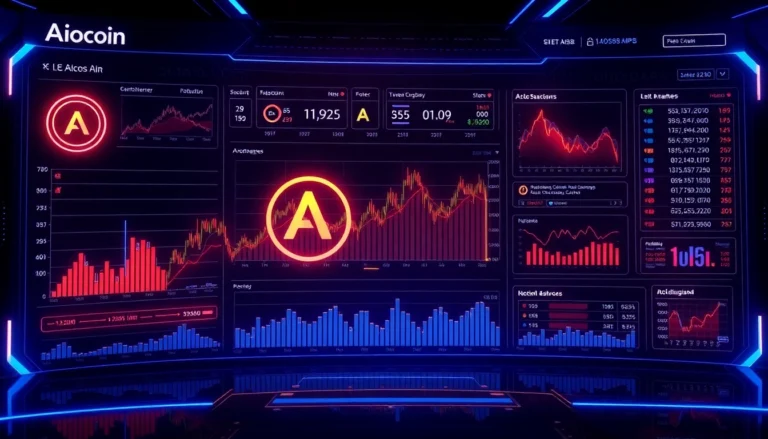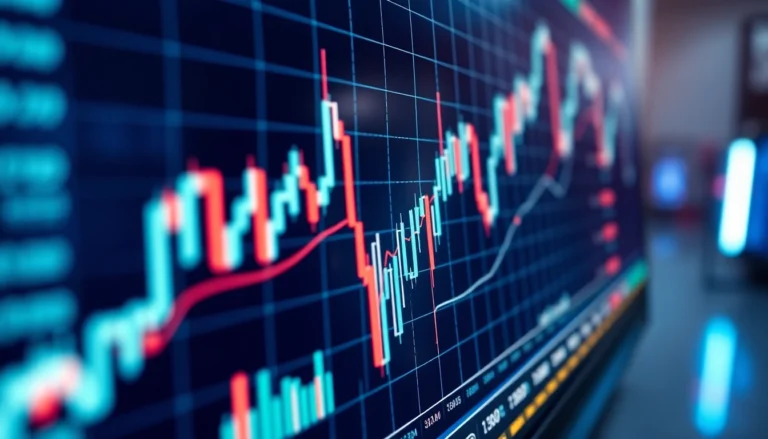Understanding Current Market Trends and Trading News Impact
The global financial landscape remains a complex and dynamic arena, influenced by a myriad of macroeconomic, geopolitical, and technological factors. Today’s traders and investors face an environment characterized by mixed stock market performances and record-breaking commodities, notably gold, which recently surged past $3,500 an ounce. Staying informed through the latest Trading News is essential for making educated decisions. Such news acts as an early indicator of potential market movements, allowing traders to adjust strategies proactively rather than reactively.
Analyzing stock market movements amid global uncertainties
Current stock indices across Europe and the United States exhibit marginal gains and losses, reflecting cautious optimism amidst ongoing global uncertainties. Factors such as geopolitical tensions, inflation trends, and inflation-related policy shifts significantly influence these movements. European shares, exemplified by the pan-European STOXX 600, closed marginally higher, buoyed by defense stocks and positive economic data. Meanwhile, U.S. futures remain steady, in part due to anticipation of upcoming labor market reports, which can serve as a catalyst for market direction.
Understanding the nuanced factors behind these fluctuations enables traders to identify opportunities within volatility, particularly in sectors experiencing heightened activity, such as technology, energy, and finance. Analyzing sentiment shifts through real-time market news, earnings reports, and geopolitical developments provides insights into short-term and long-term trends, thus shaping more resilient trading strategies.
The role of economic indicators in trading news
Key economic indicators like labor data, inflation rates, and central bank decisions profoundly impact market sentiments. Recently, U.S. labor data indicated a resilient job market, which initially supported the dollar and caused declines in equities and commodities. Conversely, weaker-than-expected data often lead to monetary easing expectations, strengthening gold and boosting stock markets due to perceived dovish stance prospects from central banks.
For traders, staying abreast of these indicators is critical. Examples include the release of U.S. non-farm payrolls, CPI, and PMI reports. Employing economic calendars linked to reliable financial news sources helps plan entries and exits based on anticipated market reactions. Additionally, understanding how these indicators interplay—for example, how a strong employment report may influence Federal Reserve policies—can lead to more informed positioning.
How geopolitical events influence trading strategies
Geopolitical developments, including trade tensions, sanctions, or conflicts, inject significant volatility into markets. Recent events such as U.S.-China trade negotiations and European Union regulatory changes have caused abrupt swings in asset prices. The escalation of tensions generally leads to safe-haven flows into gold and government bonds, while risk assets like equities may decline.
Effective trading strategies contend with these uncertainties by employing risk management techniques like stop-loss orders and diversification. Additionally, traders must interpret news headlines swiftly, assessing potential impacts on sectors or individual stocks. Reactive and proactive strategies, such as hedging or sector rotation, help mitigate adverse effects of geopolitical upheavals.
The Significance of Gold and Cryptocurrency Market Updates
Latest gold price milestones and trading implications
Gold recently soared past the $3,500 level, reaching a new record that underscores its role as a safe haven amid economic and geopolitical instability. This milestone not only attracts short-term traders betting on further appreciation but also influences longer-term asset allocation strategies. The precious metal’s resilience against inflation and currency devaluation makes it a critical component of diversified portfolios.
Traders should monitor macroeconomic variables influencing gold, including U.S. inflation data, interest rate expectations, and dollar strength. When the dollar weakens or inflation fears escalate, gold tends to outperform, providing trading opportunities either through physical asset investment or derivative instruments like futures and ETFs.
Bitcoin, Ethereum, and altcoins: recent performance and forecasts
The cryptocurrency market remains a focal point for traders seeking high volatility and potential outsized returns. Bitcoin, often termed digital gold, recently maintained a flat trajectory but holds the possibility of a bullish run if the critical 200-week trendline remains intact. Ethereum and other altcoins exhibit mixed performance, with Ether’s rally slowing, signaling potential consolidation phases.
Forecasts suggest that macro factors such as regulatory clarity, institutional adoption, and technological upgrades will shape future moves. Investors can leverage news about upcoming protocol updates or regulatory developments to time their entries and exits, aligning with broader market sentiment shifts.
Strategies to leverage crypto trading news for investment benefits
Successful crypto trading hinges on interpreting fast-evolving news cycles—be it regulatory crackdowns, institutional endorsements, or technological breakthroughs. For instance, SEC actions have recently impacted Coinbase’s trading revenue, signaling caution but also offering opportunities for tactical entries while volatility is heightened.
In practice, traders should adopt a disciplined approach to news analysis, combining technical analysis with fundamental insights. Platforms offering real-time alerts on regulatory updates or significant industry announcements enhance responsiveness. Diversification across multiple coins and employing stop-loss orders mitigate risk in this highly speculative arena.
Technical Analysis and Trading News Integration
Interpreting market charts in the context of recent news
Technical analysis remains a vital tool, especially when integrated with current news flows. For example, a stock showing strong support at a specific level could be a buying opportunity if accompanied by positive news, such as favorable earnings or regulatory relaxations. Conversely, an uptick in volatility often precedes news-driven moves, alerting traders to potential trend reversals or breakouts.
Utilizing chart patterns—like head and shoulders or double bottoms—in conjunction with news events enhances predictive accuracy. Combining technical signals with sentiment analysis can provide a comprehensive picture that guides timing and sizing of trades.
Using technical indicators to anticipate market reactions
Indicators such as Moving Averages, RSI, MACD, and Bollinger Bands help gauge momentum and overbought or oversold conditions. For instance, a MACD crossover occurring alongside positive news can signal a bullish move, providing traders with confidence to enter long positions. Conversely, divergence between price and momentum indicators might warn of impending reversals triggered by news events.
Regularly updating these indicators based on recent news ensures that trading models remain responsive and synchronized with current market conditions.
Best practices for incorporating news into trading decisions
Incorporating news requires a systematic approach:
- Use reliable news sources with real-time updates to stay ahead of market shifts.
- Develop a predefined trading plan that includes criteria for entry, exit, and risk management tied to specific news triggers.
- Avoid overreacting; analyze the substance of news rather than headlines alone.
- Employ automation tools where possible to execute trades swiftly in response to market-moving news.
This disciplined framework helps avoid emotional decisions and aligns trading actions with emerging realities.
Regulatory Developments and Their Impact on Trading
Recent regulatory changes affecting cryptocurrency and stock markets
The regulatory landscape continues to evolve rapidly, influencing trader sentiment and available opportunities. Recent moves include the Bank of England warning Facebook (Meta) about strict conditions for launching the Libra cryptocurrency in the UK and SEC actions impacting crypto exchanges like Coinbase. Such developments often result in short-term volatility but can also pave the way for future growth if regulations clarify the path forward.
Staying compliant while actively trading requires a deep understanding of jurisdiction-specific rules, ongoing legislative debates, and industry standards. Engaging with legal and compliance experts or utilizing advanced compliance tools assists in navigating this complex environment.
Implications of legal actions on trading strategies
Legal actions, such as SEC investigations or regulatory crackdowns, tend to cause abrupt market corrections in affected assets. For example, SEC scrutiny on Coinbase resulted in a dip in crypto trading revenues, but also created entry points for savvy traders anticipating a rebound after regulatory clarity is achieved.
Advanced traders monitor legal developments closely, adjusting risk exposure accordingly. Diversifying across asset classes and employing hedging strategies safeguard portfolios against unforeseen regulatory shocks.
Staying compliant while maximizing trading opportunities
Compliance does not preclude active trading; rather, it necessitates a disciplined approach to risk management and adherence to legal frameworks. Using reputable brokers, employing automated compliance checks, and staying updated on regulatory updates are best practices. Ultimately, informed traders balance aggressive pursuit of opportunities with caution to sustain long-term profitability.
Future Outlook and Strategic Planning Based on Trading News
Emerging trends to watch in global markets
Looking forward, trends such as artificial intelligence integration, ESG-focused investing, and emerging markets’ recovery are set to influence trading strategies. AI-driven research and development are poised to revolutionize data analysis, enabling faster and more accurate trading decisions.
Additionally, geoeconomic shifts, including US-China relations and inflation trends, will continue to shape market trajectories. Staying ahead involves not only reacting to news but also anticipating shifts based on macroeconomic forecasts and sectoral developments.
Developing adaptive trading strategies for volatility
In an environment marked by unpredictability, adaptive strategies such as dynamic hedging, options strategies, and algorithmic trading are essential. Real-time data feeds and advanced analytics tools provide traders with the agility to pivot swiftly when news indicates a potential change in trend.
Building flexibility into your trading plan—such as setting adjustable stop-loss levels or maintaining diversified asset exposure—supports resilience amid erratic market behavior.
Tools and resources for real-time trading news analysis
Modern traders leverage a suite of tools including financial news platforms, social media analytics, AI-powered sentiment analysis, and economic calendars. Incorporating these resources into daily routines enhances situational awareness and decision-making precision.
Platforms like Bloomberg Terminal, Reuters, and specialized apps offer customizable alerts for breaking news, while analytics tools help quantify the potential impact of news on specific assets or sectors.






